 Since entering the scene in 1998 as the writer/director of Following (1998), Christopher Nolan has become a mainstream filmmaking force to be reckoned with. Love his work or hate it, this man has created some of the most talked about films of the past decade, and he is responsible for taking some of the hottest properties back to the silver screen. While this writer personally loves the man’s philosophy of using CG only when absolutely necessary, I also struggle with some of his directorial choices. While I believe he has totally hit the mark with The Dark Knight Rises (2012), I wonder if future projects will find him slipping back towards utilizing techniques that take away from his creative accomplishments.
Since entering the scene in 1998 as the writer/director of Following (1998), Christopher Nolan has become a mainstream filmmaking force to be reckoned with. Love his work or hate it, this man has created some of the most talked about films of the past decade, and he is responsible for taking some of the hottest properties back to the silver screen. While this writer personally loves the man’s philosophy of using CG only when absolutely necessary, I also struggle with some of his directorial choices. While I believe he has totally hit the mark with The Dark Knight Rises (2012), I wonder if future projects will find him slipping back towards utilizing techniques that take away from his creative accomplishments.
Before I continue, I can picture right now, readers of Horror News wondering why this newbie writer is focusing on Christopher Nolan and Batman—non-horror—for his first piece. Bear with me; some of his scenes actually are quite scary—like the Mol and the elevator scene in Inception (2010), the mysterious caller sequences in Memento (2000)… and many of the gimmicks and trick endings that plague his weaker films!
I kid Christopher Nolan; I kid. There isn’t a single film of his that I flat out don’t like. There’s just parts that I wish weren’t in his movies… parts that take away from the excellent work he’s doing in other areas of each film. So every time I criticize his work, imagine the sentence starting with: “I love Christopher Nolan, but…” Deal?
Let’s practice: I love Christopher Nolan, but The Dark Knight (2008) would be a much better movie if he cut 20 minutes of it and tightened up the pacing. I love Christopher Nolan, but Inception would be a much better movie if he cut the spinning token gimmick from the end of the film. See how this works?
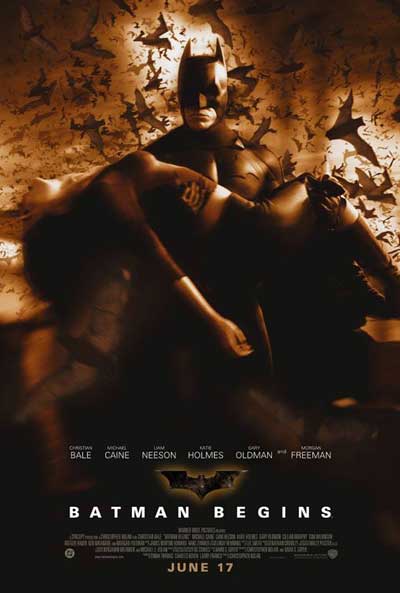 Now, Batman Begins (2005) is a film that I liked from the start, but not one I particularly gave much reflective thought when it was over. It wasn’t until re-watching it around the time leading up to the release of The Dark Knight Rises that I really found the movie to be an excellent film… even a better film than The Dark Knight. Without Heath Ledger’s excellent performance, the second movie easily could have spun out of control with no real focal points. In Batman Begins, the ensemble cast shines more clearly. Like vintage film noir, there’s no one scene or set of scenes that particularly cast a shadow on the rest of the movie. We are instead treated to a truly visionary retelling of the Batman origin, a dangerous story to attempt to retell for the simple fact that we have all so strongly committed our expectations of must be to our minds that we could all recite it in our sleep.
Now, Batman Begins (2005) is a film that I liked from the start, but not one I particularly gave much reflective thought when it was over. It wasn’t until re-watching it around the time leading up to the release of The Dark Knight Rises that I really found the movie to be an excellent film… even a better film than The Dark Knight. Without Heath Ledger’s excellent performance, the second movie easily could have spun out of control with no real focal points. In Batman Begins, the ensemble cast shines more clearly. Like vintage film noir, there’s no one scene or set of scenes that particularly cast a shadow on the rest of the movie. We are instead treated to a truly visionary retelling of the Batman origin, a dangerous story to attempt to retell for the simple fact that we have all so strongly committed our expectations of must be to our minds that we could all recite it in our sleep.
And what does Nolan do when he re-launches this mammoth franchise? He picks the most psychological villains available, and he grounds them in brutal reality. People exclaimed that Tim Burton did this with Batman (1989) and Batman Returns (1992), and at the time he truly did. But there’s a big difference between a realistic Batman in the late 80s—with the closest precedent being the Adam West schlock-fest of the 60s—and a realistic Batman in a post-9/11, post-financial meltdown, post-Patriot Act era. In Burton’s films and the following two Batman flicks of the nineties (which shall remain nameless) characters come back from the dead and do the impossible on screen, their actions dictated by what would be most visually appealing. In Nolan’s work, even the craziest characters’ actions are dictated by a psychological profile that is very much grounded in the real world. If Ra’s al Ghul was drafted to appear in one of those 90s films, I can guarantee the Lazarus Pit would be a major set piece, later to be included in a Smashing Pumpkins music video, and Ra’s would be coming back to life again and again in every act. In Nolan’s vision, death is final: Ra’s tells Bruce that, “There are many forms of immortality”. His immortality is displayed through his ideas. This grounds Batman in our world, a world where we’ve witnessed over and over again that the death of an international terrorist does nothing to diminish the dangerous fanaticism he has created.
In The Dark Knight Rises, Nolan’s decision to see Ra’s al Ghul’s extreme vision to the end, which was started in Begins, is what solidified the impact of the first film and made sure for good that this will be the greatest film representation of Batman of all time. After the amazing success of The Dark Knight, and the critical acclaim for Heath Ledger’s performance, moviegoers wondered how Nolan could possibly pull off a satisfying conclusion to the series without Ledger. Nolan has stated that the final film would have been dramatically different had Heath still been alive. Chris Nolan’s solution was the most tasteful and most effective route: out of respect for the amazing actor and his untimely death, Nolan left The Joker completely out of the proceedings of the third film, leaving a question mark sitting comfortably on the fate of a character so mysterious that the audience could believably sit with such a choice.
Besides, The Joker couldn’t fit in with Ra’s’ plan and Bane/Miranda’s implementation of it. Sure, Dr. Crane could be brought back for a short cameo; he was already working for Ra’s in the first film. But The Joker would want nothing to do with The League Of Shadows’ calculated plan for restoring balance to the world. He would throw a kink into the story in a way that couldn’t be easily solved in a film that is already almost three hours long. So, one would imagine that because The Joker would have been featured prominently, the film therefore may not have taken the trilogy full circle in the way it ultimately did. Therefore, Ledger’s tragically premature death may have led to a very different trilogy altogether. This draws a striking parallel to the horror scene of the early 1930’s, where the tragic and untimely death of makeup and monster legend Lon Chaney Sr. gave birth to a variety of new classic horror favorites in the roles of parts that all likely would have gone to Chaney had he lived: Bela Lugosi as Dracula, Boris Karloff as the Frankenstein monster, and so on. Unlike how stories are immortal, the storytelling itself hinges completely on the humanity and mortality of the artists bringing us those stories. While Ledger most likely would have delivered another spellbinding performance in the third film, his heartbreaking passing ultimately shaped the trilogy into a story that would have to go back to its roots to continue.
 This full-circle approach to the conclusion both elevates the franchise to a true trilogy status (something that rarely ever happens in terms of actual storytelling) and also reveals The Dark Knight Rises as the greatest film of the trilogy. It was at this point that Nolan completely nails his treatment of his all-star cast, by buckling down in the writing and editing departments. Many of his trademarks can be found throughout the movie. But while they sometimes fail in his other works, they actually contribute to the expert storytelling of Rises. And this is why, going forward, Christopher Nolan must never forget the Batman.
This full-circle approach to the conclusion both elevates the franchise to a true trilogy status (something that rarely ever happens in terms of actual storytelling) and also reveals The Dark Knight Rises as the greatest film of the trilogy. It was at this point that Nolan completely nails his treatment of his all-star cast, by buckling down in the writing and editing departments. Many of his trademarks can be found throughout the movie. But while they sometimes fail in his other works, they actually contribute to the expert storytelling of Rises. And this is why, going forward, Christopher Nolan must never forget the Batman.
The Dark Knight Rises contains nothing we haven’t seen before. The same could be said about any movie made at this point. It’s all been done, so the way that it’s done is now what separates good films from bad films. The real triumph of The Dark Knight Rises is how the characters are handled, how the plot points are presented, and how the characters are developed towards the conclusion of the franchise. Keeping this simple concept in mind could have immediately strengthened some of his films I struggle with. Both The Prestige (2006) and Inception feature a star-studded cast of characters… that I can’t tell the difference between! While this issue is certainly much worse in Inception than The Prestige, both films struggle to flesh out characters beyond their desires. Following, Memento, and Insomnia (2002), focus on a much smaller cast and display their respective motifs more intimately, but once again we have characters who are defined by what they want rather than how they develop. Pacino’s split second decision at the end of Insomnia doesn’t count as character change because nothing leads up to it. Memento gets a free pass because we’re witnessing the story unfold from mainly the perspective of a main character who doesn’t remember enough about himself to know how he’s developed. But Following, the first film written and directed by Nolan, is what sets the stage for the issues I find within The Prestige and Memento.
Shot on a very low budget and a much smaller scope than the projects Nolan would eventually come to acquire, his first film features his trademark non-linear storytelling and his underdeveloped characters that viewers might struggle to care about. Nolan doesn’t hide the fact that we’re supposed to know little about the characters… some of the character names include The Bald Guy, The Young Man and The Blonde. Cobb, a main character, parallels the Cobb of Inception in that he his surrounded by characters who can fit similar stereotypes… only this time they have real names! Except I couldn’t name most of the characters from Inception, anyways. I know that Cobb wants to go back to his kids, Ellen Page’s character wants to help Cobb, and Joseph Gordon-Levitt’s character wants a relationship with Ellen Page’s character. And therein lies the struggle with appreciating some Nolan films: their presentation of characters is defined by what they want rather than who they are and what they become as a result of the happenings of the film. Memento: a man wants to avenge his wife’s murder. The Prestige: a man wants to learn the secret to his enemy’s success. The Batman series has a lot of wants and desires too: Bruce wants to avenge his parents’ deaths by protecting Gotham, Alfred wants Bruce to be safe and lead a healthy, happy life, Harvey Dent wants to clean up the city using the righteous process of the legal system, Selina Kyle wants to clear her criminal record and start over fresh, Ra’s al Guhl wants to restore balance to the world, The Joker just wants to watch the world burn…
Interview someone leaving the theater after first seeing Memento and I guarantee one of the first things you’ll hear about is either the plot twist or Leonard Shelby just wanting to avenge his wife’s murder at all costs. Interview someone after seeing Inception and it’ll be about the plot twist or Dominick Cobb just wanting to see his children again at all costs. But interview someone after first seeing the Batman films, and praises will be sung about entirely different elements of filmmaking. The Joker’s erratic and haunting maneuvers and tactics might be mentioned. Bane’s utter belief in his twisted philosophy and the terrifying dichotomy of his almost aristocratic discourse clashing with his animalistic brutality might be lauded. The subtle exchanges between Bruce and Alfred may be praised, or the underlying motif of the lonely, fearful young boy with an uncertain future may be explored. Sure, these characters all yearn for something; but there’s more to them than their wants and needs.
Presentation of characters and character development is one of the single most important factors to separate the Dark Knight trilogy and some of Nolan’s other works. In the months leading up to the release of The Dark Knight Rises I had serious concerns about Bane carrying the movie as a villain. He wasn’t very interesting in the comic books, primarily playing the role of the one-sided 90s villain whose motto is “style over substance”. Despite the fact that he was written to be smarter than the average brute, his oversized image overshadowed everything else in a comic age ruled by big thugs and flashy costumes. Nolan’s Bane, on the other hand, is a dangerous clash of various ideologies. Although he is savage and relentless, some of his quirks lead the audience to believe that Ra’s and Miranda may have over-civilized him in some ways. It’s no small feat that Nolan (and Tom Hardy, of course, with his exceptional performance) chose one of the rogues gallery’s least desirable characters for the last film and made him into something so much more vivid and imaginative than what came first in the source material. While Nolan borrows many Joker characteristics from the graphic novel works of Alan Moore and Frank Miller, his version of the Joker is something so captivating the audience can’t look away.
Unfortunately, this isn’t always present in other Nolan films. The characters of Inception are walking stereotypes. The characters of The Prestige are slightly more developed, but this is mainly though the development of an interesting time period and location, and the presentation of their magical skills. David Bowie has a small role as an eccentric and unusual inventor, and sadly it is one of Bowie’s least interesting roles in the history of his performances in both film and music. Now if Bowie has proven one thing, it’s that he’s excellent at being captivatingly unusual, but he is given almost nothing to work with in the film but a message to deliver. Cillian Murphy is handed a similar kind of role in all three Batman films, but Nolan’s character study allows for Murphy to truly explore and exhibit the eccentricities of The Scarecrow. Even his small cameo running the kangaroo court in Rises is instantly memorable because of the material he was given to work with. Because of the script and the scenarios, The character ends up completely embodying a bizarre mix of mysterious obsession that I would have loved to have seen in Bowie’s Tesla.
And then there’s the plot twists. Memento, The Prestige, and Inception successes all hinge on the plot twists. Releasing a year after The Sixth Sense (1999), Memento rode the wave of moviegoers’ acclaim for films that make you go, “oooooohhhhhh” at the end. All of a sudden, the twist was more important than anything else in the movie. And that’s just the way it goes, both in how a movie of this kind is written and presented and how it is received by an audience. Very few films achieve moviegoer approval and critical excellence beyond the twist when the filmmakers choose to incorporate a twist in the first place. The ending to The Sixth Sense has become a punchline. The home releases of Memento have a special feature where viewers can watch the film in chronological order. It’s at this point where the construction of the plot and development of the characters really show the flaws of the film. Re-watching Memento and The Prestige only rewards the viewer in that they reinforce the cleverness of the trick ending. We watch them again not to further explore the hidden themes and techniques we couldn’t see the first time, but to find the moment where the secret ending becomes apparent for the first time. We re-watch Inception to see if there’s enough evidence in the film to support either scenario suggested by the open-ended ending, or trick ending, depending on how you look at it. Character performances need not be further examined; only plot. While Citizen Kane (1941) employs a memorable surprise ending that has become a part of our zeitgeist, the secret of Rosebud is one that deeply enhances the very core of the main character. Our understanding of the scene leads to our understanding of the character’s soul. This is what’s missing from the late 90s/early 2000s craze of tricks and surprises that happen in the last 60 seconds, and only captivate us briefly until something new comes along.
The Dark Knight Rises easily could have headed into this territory, had it not been for restrained writing at the end of the film. Bruce’s survival and Blake’s takeover of the cowl easily could have come out of nowhere had it not been for the writing of the film. The only element that could possibly be considered a twist is that the writing is so natural that we don’t realize that while we’re viewing the story of a hero rebuilding himself to overcome an obstacle, we’re also viewing the origin story of a man becoming a hero. Blake learns all of the lessons Bruce had to learn, and he learns them on the street doing detective work, a simple but powerful nod to the very essence of the Batman of Detective Comics. The subtlety of Blake’s story arch is what makes the end of the movie so satisfying. We are filled with emotion to see Bruce alive and happy at the end because the three films made it easy for us to invest our interest into him. We want to see him succeed, and we know he can do it because we know what he’s capable of doing. And once again, in this moment Nolan exhibits restraint. Before this cathartic scene, we are given hint after hint that Bruce Wayne may be alive, rather than simply blasted with it, with no prior notice.
And therein lies a major difference in the writing of The Dark Knight Rises and some other Nolan-written and directed scripts of the past: subtlety. His brother, Jonathan Nolan, is first in the writing credits for The Dark Knight and Rises. The same goes for The Prestige. Looking back, Jonathan Nolan wrote a short story treatment for Memento, but did not contribute to the final screenplay. Because the films co-written by Jonathan are either less heavy-handed in their presentation of the twist (let’s face it, there’s more to find in terms of character development in The Prestige than Inception), I have to wonder if Jonathan Nolan acts as a grounding agent; a yin to the yang of Christopher’s creative ambition. I could almost picture the two collaborating on the ending to Rises: Jonathan suggests the final scene where Blake is cautiously rising out of the water on the platform in the Bat Cave, and Christopher excitedly proposes another final shot showing Gordon-Levitt standing over the city in a full Batsuit. Once again, it is clearly an assumption on my part that Nolan’s writing partner is providing much-needed restraint in storytelling, but the evidence of the writer credits for each film are pointing to a certain story.
Because Inception is the closest film to The Dark Knight Rises in terms of linear proximity and production scale, it is important to consider the major elements of Inception—which have now become Christopher Nolan signatures—and explore how they simply work better in Rises. This boils down to three major characteristics: signature aerial shots, an in-your-face soundtrack featuring loud horns, and plot moments featuring an emotional release.
At this point, it is clear to moviegoers that Nolan loves camera shots coming from way up in the sky, directed at a major location that will set the tone for the story that will take place within it. This signature was truly solidified with The Dark Knight, where the Imax cameras were literally made to capture the grandiosity of these expensive and rewarding shots. Whenever we find ourselves up in the air in a Batman film, we take in a new part of Gotham and further flesh out our understanding of it as a realistic, moving, breathing place. This is incredibly important due to the fact that Nolan’s Gotham is an amalgam of real American cities. We need to see the scope of it to understand its nuanced qualities. And because the shooting style and location varied between the three films, each new aerial shot gives us something new to chew on as we take in the details of this fictional world. Inception gives us these same shots. One look at them, and you know you’re watching a Nolan film. But they appear a couple of times when the movie is being set up in the real, non-dream world, and then they disappear for most of the movie. It could be argued that Nolan avoided these shots in the dream world in order to help the viewer differentiate between what’s real and what’s a dream; but even this intention takes away from the spirit of what made these shots work so well in the Dark Knight trilogy. The dream worlds are the true works of fiction in Inception, and these are the worlds that the viewers are most likely going to benefit from exploring in this large, open scale. The dream environments are the movie’s Gotham, the imaginary locales that the viewer needs to construct in his or her head in order to appreciate the scope of Nolan’s creativity. In the non-dream world of Inception, we’re just looking at a big, high up shot of a generic city. The Batman films avoid this altogether by oftentimes enhancing these images with burning Bat-Signals or elements that ground us in the specific world of the film.
Hans Zimmer’s powerful score has become synonymous with the storytelling of Nolan’s recent films. However, what came across as annoying and uninspiring in Inception became a soundtrack I raced to the store to pick up immediately after seeing The Dark Knight Rises for the first time. This ultimately boils down to how these big blasting horns were used in each film. While Inception offers traditional summer movie action and explosive plot points, the very premise of our dreams leads to something that is sometimes much more subtle. This is something Nolan does very well in the movie: dabbing his quieter moments of characters’ dreaming with tiny gaps in logic and physics. While the inclusion of this added touch to those scenes improves the authenticity of the subject matter of the film, most of the time even quieter moments were drowned out by the intensity of the score. And at the end of the day, most of the movie is centered around people napping, so the film would likely be more effective if the score allowed it to slow down every once in a while. In The Dark Knight Rises, the same style of music drives the film through a powerful progression.
The title alone suggests the proper score, and these blasting horns that build up, up, up, towards cathartic release enhance what we are watching on the screen. This most notably occurs when Bruce climbs up from the pit, when Gordon lights the flare and the scene builds towards the ultimate burning of Batman’s war signal into the architecture, and when we discover the two final plot points of the film. Suddenly, a sound that was flat out annoying in Inception becomes powerful and exciting in Rises. This is absolutely due to the other elements of storytelling that are present in the Batman films and missing from Inception. The three main points of Rises which are enhanced by the music work because we are invested in the characters and we are willing to take a leap with them towards these monumental moments. In addition, the more nuanced moments of Rises are complemented by something much more delicate than can be heard in Inception. The Catwoman’s musical cues can be picked out from the soundtrack without having even seen the movie, and the dark, foreboding and brooding scenes of the film are properly accented, making Zimmer’ score (in collaboration with James Newton Howard on the first two films) enhance the Batman movies, rather than work against them.
Despite his expert displays of big budget action, Nolan also works to get in close and allow the audience to feel for his characters and connect with them in both Inception and The Dark Knight Rises. However, Inception falls short in this area as well. The two primary beats where we are supposed to feel an emotional release with the characters of Inception is when during a dream, Cillian Murphy’s character, Robert Fischer, discovers his childhood windmill in his father’s safe, and when Cobb is ultimately reunited with his children at the end of the film (or is he?). Both of these emotional experiences are superficial, and rely heavily on the audience making literal connections to their own lives. We all have a token from the past that could conjure up memories of a simpler time between us and someone we love. Even if we don’t have children, everyday human interactions allow us to empathize with someone who would be reunited with his children at last, like DiCaprio does in the film. However, none of us will ever climb out of a massive pit with our bare hands, or give up our bodies for the fate of an entire city. The moments that we feel an emotional connection with Bruce Wayne are moments we could only dream of achieving ourselves.
Therefore, the connections are deeper and ring truer because they are metaphorical by nature. While we may ever drag ourselves out of the worst prison in the world, we can all reflect on milestones in our own lives where we have surpassed insurmountable odds and rose successfully. The impossible odds posed in this work of fantasy require us to connect beyond the literal to find the humanity of Bruce Wayne. All in all, this kind of writing is much more difficult to achieve successfully; but it is much more rewarding for the audience because it moves us beyond the literal feeling of, “I feel bad for this guy because I had a similar relationship with my dad” and into deeper feelings of, “I want this character to succeed because I once faced an obstacle I thought I could never endure, and it felt so much better when I finally did”. Christopher Nolan has made many decisions with his films that prove he is willing to trust his audience to be thoughtful and reflective. He needs to commit to this every time he asks us to connect with key emotional sequences for his characters, and move beyond easy connections and literal-based tear grabbers.
The only Nolan signatures present in Inception but missing from The Dark Knight Rises are the elements of non-linear storytelling, and the trick ending. And it’s time to give these both a rest. His merits as a writer and director prove he is beyond this kind of work at this point. This is the man who has a role in bringing us the new Superman and who will be asked by the big studios to bring moviegoers many more amazing things in the future. This is a man who understands what good filmmaking is, and who has finally achieved it 100% with his latest film.
His next movies will certainly define the age of cinema we currently live in, and solidify his ever-evolving style. As he further hones this style, his films will benefit by remembering what worked and trying something different from what hasn’t been as groundbreaking for this trendsetting director.
Just as Gotham City erected a bronze statue of a proud, yet reflective Batman at the end of The Dark Knight Rises to remind them of the ultimate triumph of their hero, Christopher Nolan should look back to his trilogy—especially the third film—whenever making decisions about how to fully realize his ideas on future projects. The films contain many secrets for filmmakers to learn how to make a good movie in an age where mediocrity reigns supreme at the box office. They also provide a major critical and commercial payoff for a director who has been working towards this level of expertise for over a decade. I believe that history will prove that this will be the point where Christopher Nolan has honed his craft as a true virtuoso filmmaker, and it is my hope that it will also come to be known as the point where Christopher Nolan has abandoned any techniques that at one point prevented his unique and extraordinary visions from being fully embraced by his critical audience. The loud horns are blasting the tone of great achievement, the platform is quickly rising from the waters below; the next move is up to him.
Why Christopher Nolan Must Never Forget The Batman
 Horror News | HNN Official Site | Horror Movies,Trailers, Reviews
Horror News | HNN Official Site | Horror Movies,Trailers, Reviews

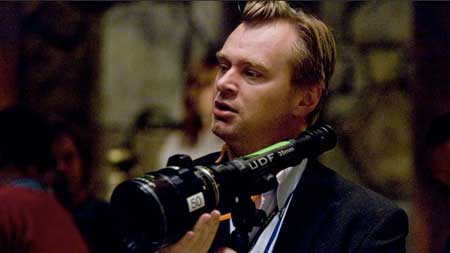

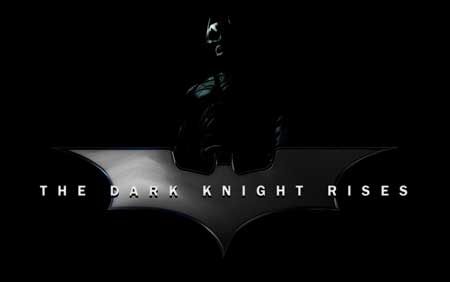

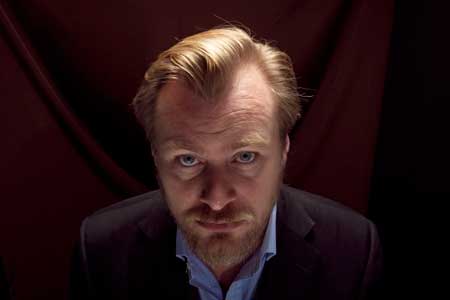

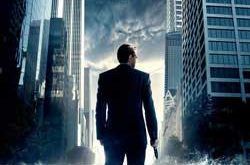
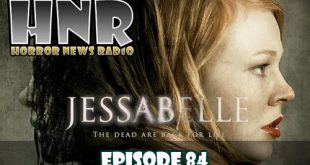
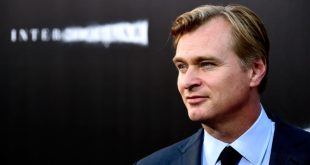
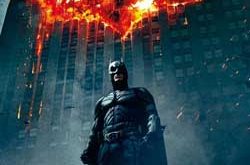
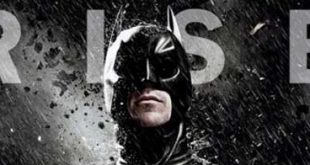
Welcome to HorrorNews.net! – Very nice piece!
Great job! This was seriously a good read.